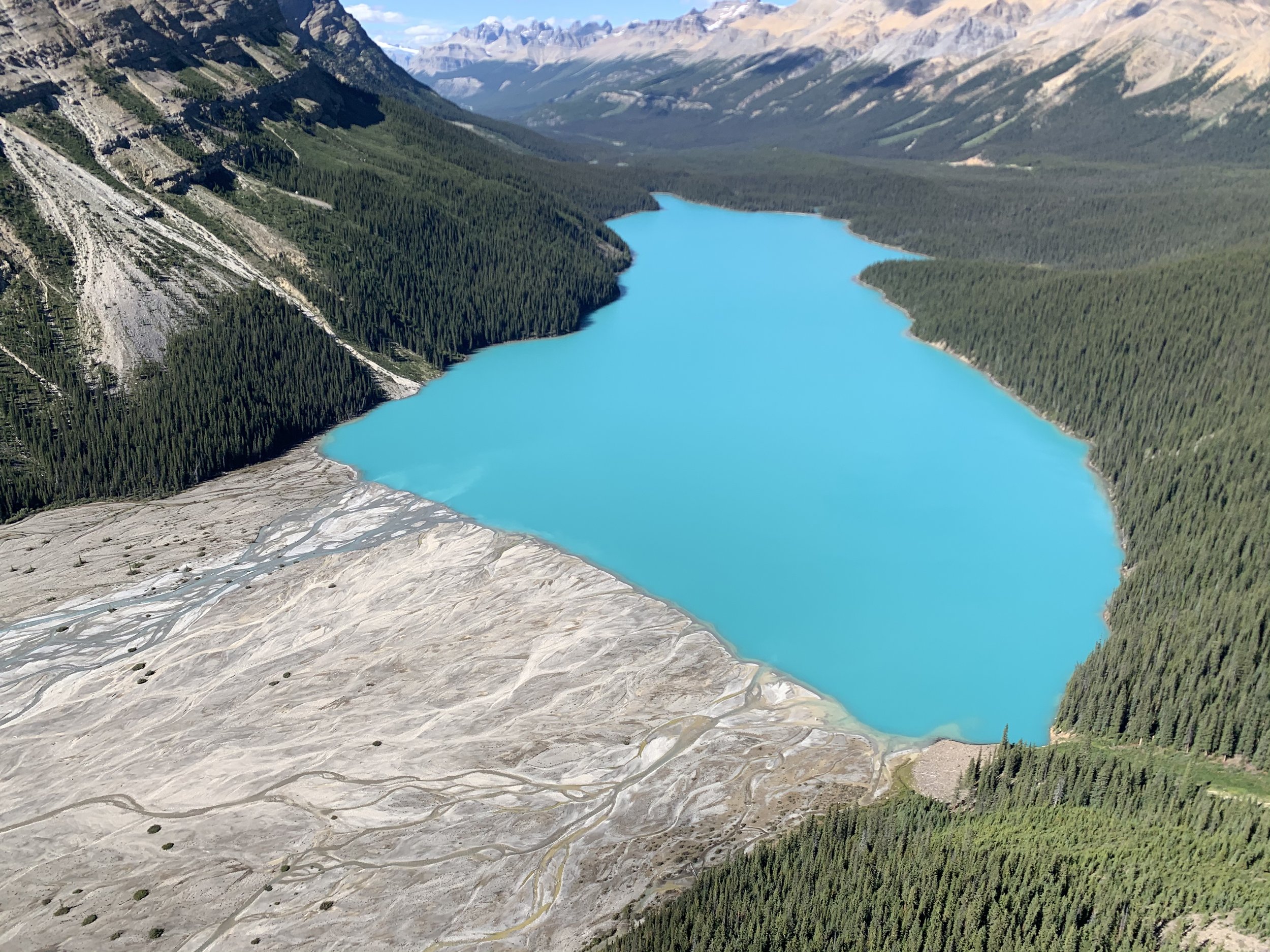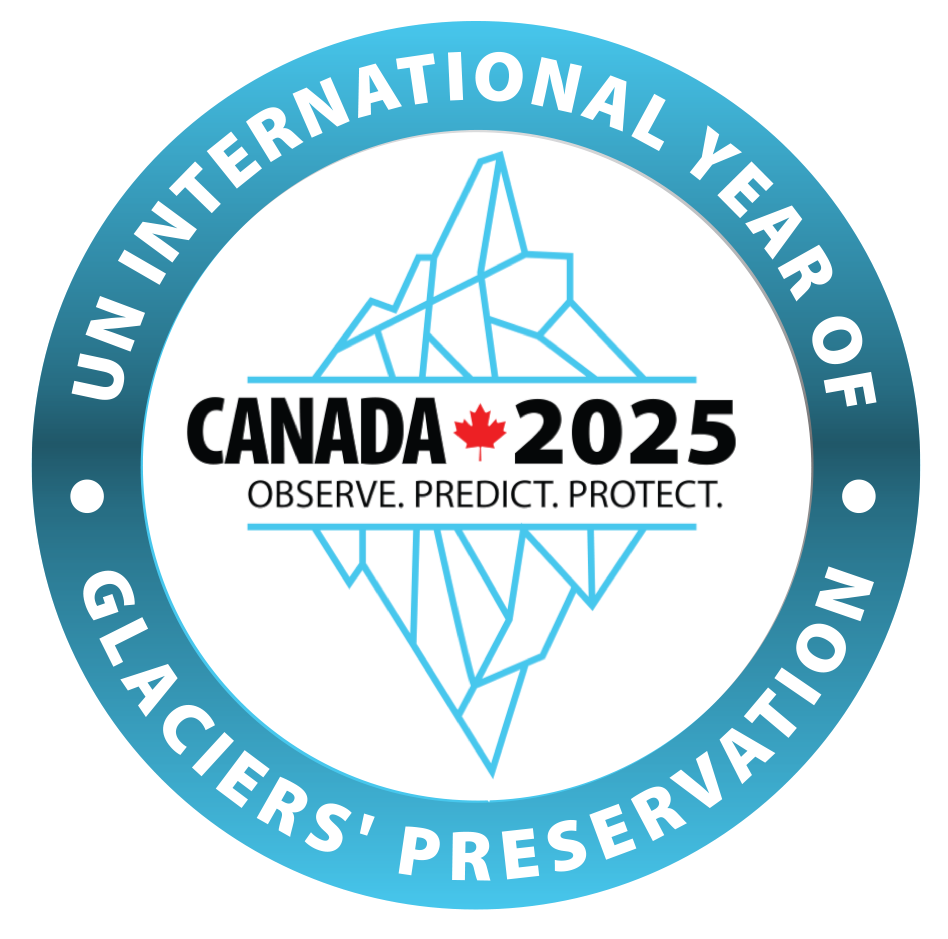
The Year in Canada.
Photo courtesy of the Centre for Hydrology, University of Saskatchewan.
It’s not just about glaciers.
The UN International Year of Glaciers’ Preservation in Canada is about more than glaciers. It is about Canada’s relationship as a whole to the cryosphere (referring to water across all of its frozen forms, including glaciers, snow, ice, and permafrost). The IYGP will focus on freshwater impacts and changing hazards and risks in mountain and Arctic regions, but importantly, it will also be a celebration of our frozen lands and the awe they evoke within us.
The objectives for the IYGP in Canada are to:
Raise awareness of:
The importance of all forms of snow and ice to Canada’s freshwater supplies and ecosystems.
The hazardous effects of changing snow and ice conditions in Canadian mountain and Arctic regions.
The local and downstream social, economic and cultural impacts of snow and ice change.
Existing water management and cooperative frameworks and their role in finding solutions and adaptations to change.
Promote Canadian snow and ice research, with the goal of improving our scientific understanding of climate change impacts on mountain and Arctic regions, and what these impacts mean for water-users downstream.
Improve scientific communication of snow and ice research findings.
Foster recognition and appreciation for snow and ice as more than just “water resources,” with an emphasis on artistic and Indigenous perspectives.
Promote policy improvement for water resources management in Canada at municipal, provincial and federal levels.
Celebrate the beauty of our frozen lands, and the joy we have in experiencing them and sharing them with the world.
Success in the context of the Glacier Year requires improving our understanding of what an increasingly deglaciated and snow-free Canada will be like, and how we can adapt to the new circumstances we will face in a warming world. In addition to climate action, we need to anticipate new and different needs in terms of infrastructure, hazard and emergency preparedness, economic policy, food security, energy security, tourism and mountain living.
How do we do this?
Observe, predict, protect. Understanding is integral to protection. Thanks to the dedicated work of Canadian researchers and academic institutions we have a solid foundation of science informing our understanding of the cryosphere, but nevertheless questions remain. What we need now is to make sure is that this scientific research continues and expands. We rely upon the observations made by field scientists to make predictions and informed decisions, and when so it comes to water-related policymaking – whether in the mountains, in the prairies of Alberta or Saskatchewan, municipalities across the West, or beyond – good observations are fundamental.
Every year the state of our frozen water resources is changing, and if we do not commit to maintaining and improving scientific research, we risk having our understanding of the situation be outpaced by the rate of change. We cannot be effective water managers, government leaders or decision-makers if we do not know what is going on. We need to observe in order to predict, and we need to predict in order to protect.
Changes in the Athabasca Glacier, courtesy of the Mountain Legacy Project. Top picture taken in 1917 by A. O. Wheeler, bottom picture taken in 2011 by Mary Sanseverino.
From research to action.
Research and monitoring are indeed critical, but protection also demands better policy. This means having our leaders make decisions that integrate both scientific understanding as well as social, economic and cultural considerations into decision-making processes, and importantly, for these processes to operate with an awareness of what other sectors are doing.
Protection must also recognize that change is coming. This is not to say that climate mitigation is not necessary (in fact, it is critical), but to recognize that even if we cut all CO2 emissions today, we would still be facing dramatic future changes in glacial ice volumes and mountain hydrology in Canada. This means that in addition to climate action, we also need to anticipate new and different needs in terms of infrastructure, hazard and emergency preparedness, economic policy, food security, energy security, tourism and mountain living
The importance of context
There is tremendous variability in how climate change impacts will manifest themselves from place to place and season to season. Even within the Canadian Rockies, glaciers are shrinking, but not all at the same pace. Decaying snow and ice are creating new hazards, but not everywhere. Glacial ice melt feeds some river headwaters, but not all rivers receive the same volume of melt, nor is the volume of melt consistent each year. In other words: climate change impacts vary. This tells that that even though general trends and concerns are important for coming up with overarching frameworks for action, to really prepare for what climate change will mean in Canada, we need to be context specific.
Variability should not be mistaken as a reason to dismiss scientific warning or reason to delay action. Variability simply means that we need to make an effort to understand the full hydrological context of our everyday lives, and importantly, pay close attention to how it is changing.
A map showing the major Canadian rivers. In pink are the rivers with headwaters in the southern Canadian Rocky Mountains. Image licensed Creative Commons 3.0.
Map of Projected climate change impacts for major river drainage basins that are shared across Canada‒US borders. Source: Chapter 9 of the National Issues Report led by Natural Resources Canada in 2021.
Did you know? Transboundary waters
Canada has a long history of managing the rivers and lakes that either provincial or national borders, also known as “transboundary waters.” Waters that flow between Canada and the United States are overseen by the International Joint Commission (IJC), and have been cooperatively governed according to the Boundary Waters Treaty since 1909.
Some inter-provincial transboundary agreements include:
The 1969 Master Agreement on Apportionment (between Alberta, Saskatchewan and Manitoba)
The 1997 Mackenzie River Transboundary Water Master Agreement (between BC, Alberta, Saskatchewan, the Northwest Territories and Yukon)
Changes in the Kaskawulsh Glacier, Kluane National Park Reserve, Yukon courtesy of the Mountain Legacy Project. Top picture taken by J. J. McArthur in 1900; bottom picture taken in 2012 by Mary Sanseverino. This glacier made headlines in 2016 when it retreated so much that its melt water changed direction.
Can we really preserve our glaciers?
It depends what we mean by “preserve.” The greatest threat to glaciers is anthropogenic climate change and so glacial action means climate action. That said, glaciers are embedded in complex climate feedback systems already in flux, meaning that even if we stopped all CO2 emissions today, we would still be seeing a dramatic decline in glacial ice volumes in Canada. This means that while climate action is necessary, we also need to prepare for change. The purpose of calling for “glaciers’ preservation” is not really to “save the glaciers.” The purpose is to recognize the significance of water in its all of its frozen forms using glaciers as a symbol of the change to come.
Quick Facts
Canada is the most glacierized country in the world, with (currently) over 200,000 square kilometres of glacial ice.
Wildfires, floods, droughts and other natural hazards are intimately linked to mountain hydrology.
Since 1985, an estimated 1141 glaciers have disappeared as of 2020 in BC and Alberta (an 8% decline). Ice-area loss has accelerated significantly since 2011.
Glaciers across Canada’s western mountain ranges are projected to lose between 74% and 96% of their 2006 volumes by 2100.
Between 2000 and 2019, Canada’s glaciers lost enough ice to raise global sea levels by 5 mm. That’s about 2.2 million cubic kilometres of melted ice for a total mass loss of around 1,900 gigatonnes.
2024 was the hottest year on record.
Athabasca Glacier, 1980. Photo courtesy of John Pomeroy.







